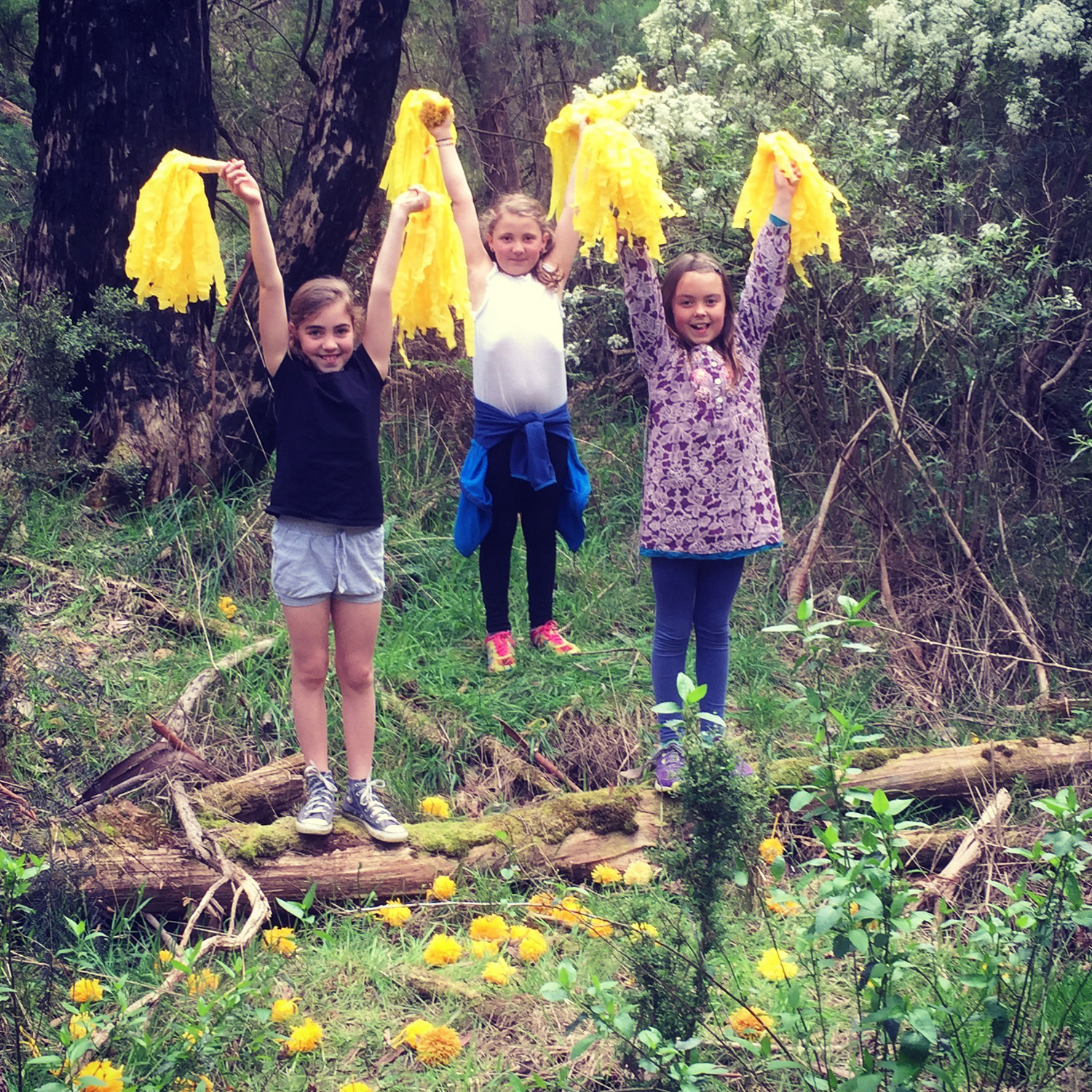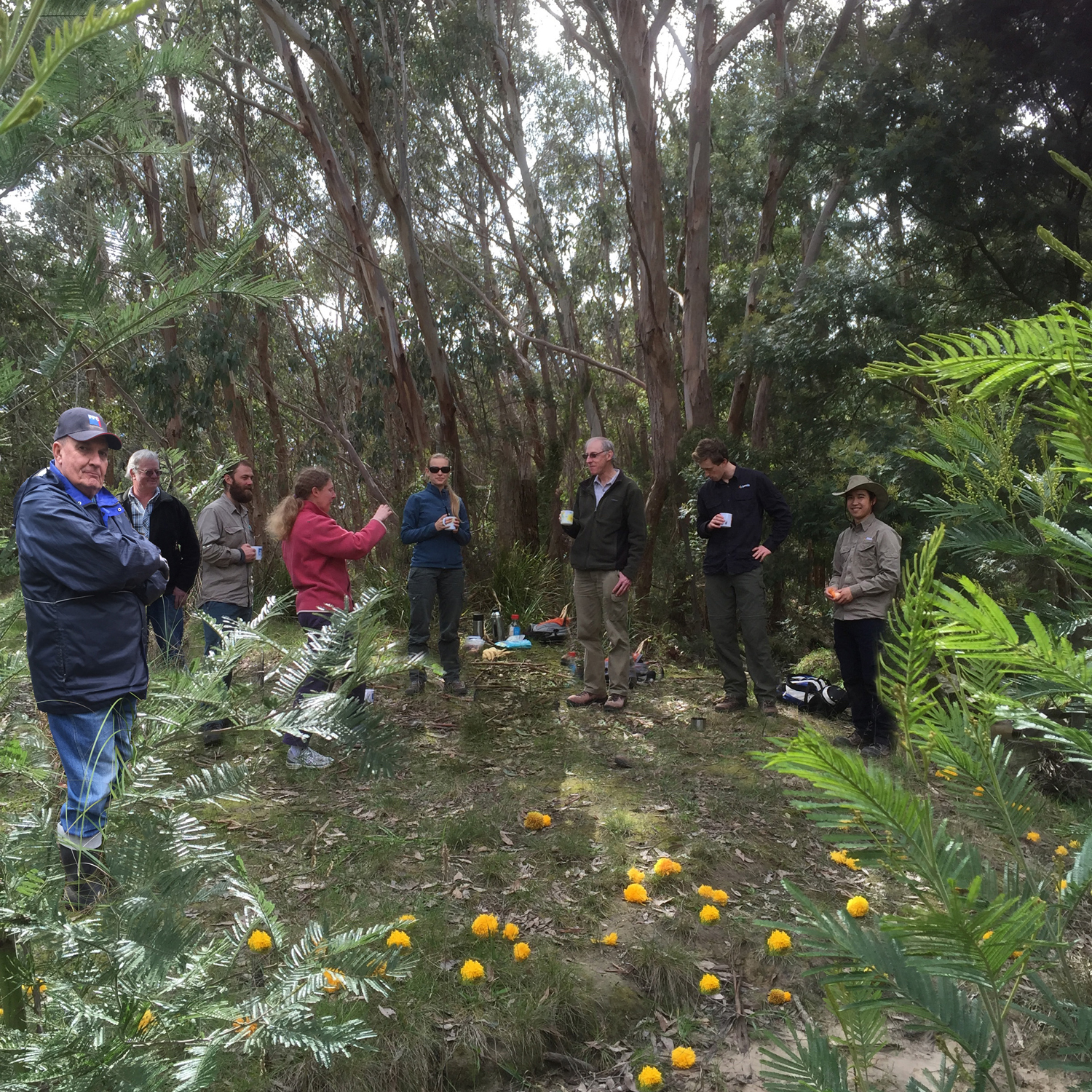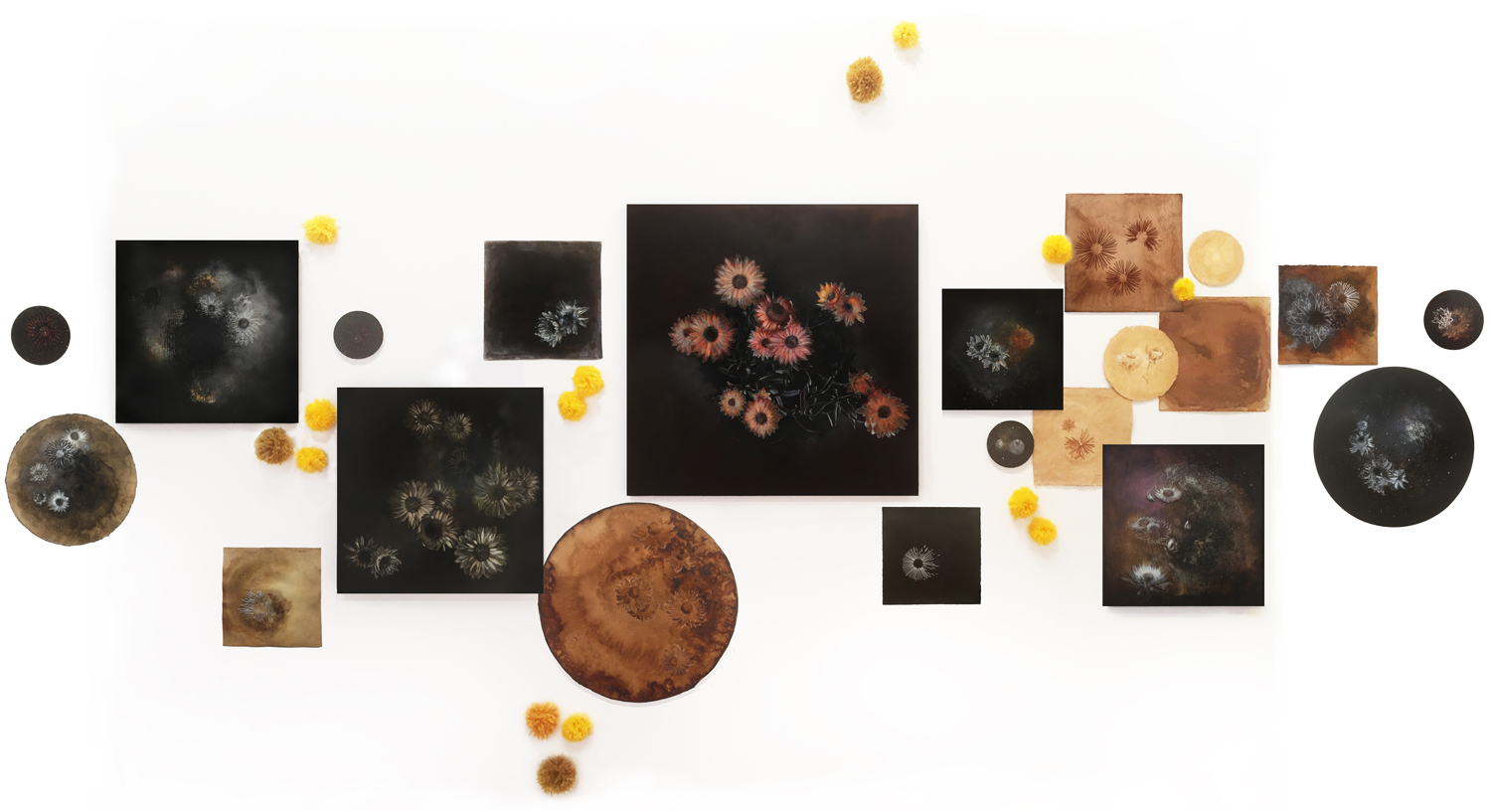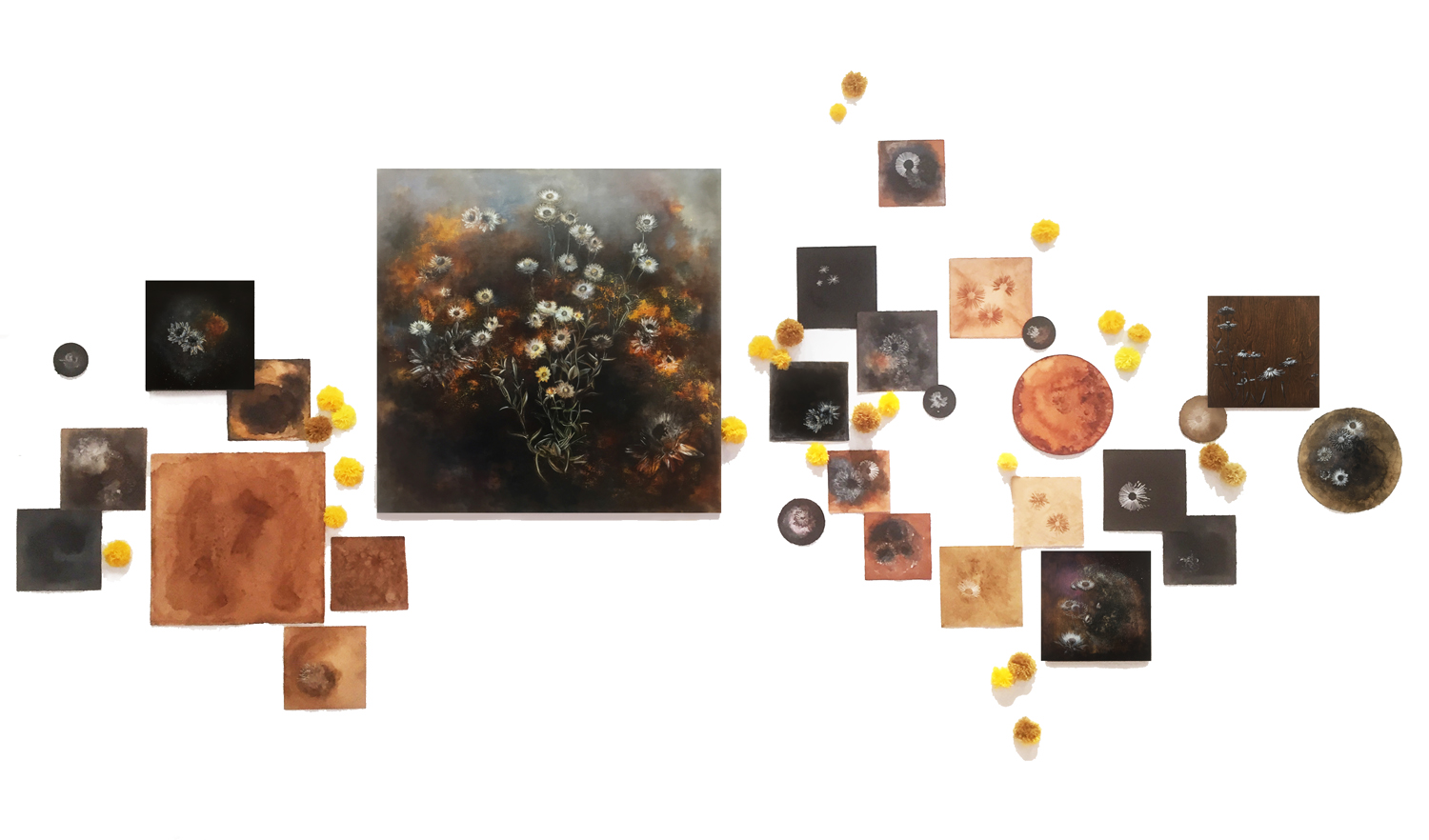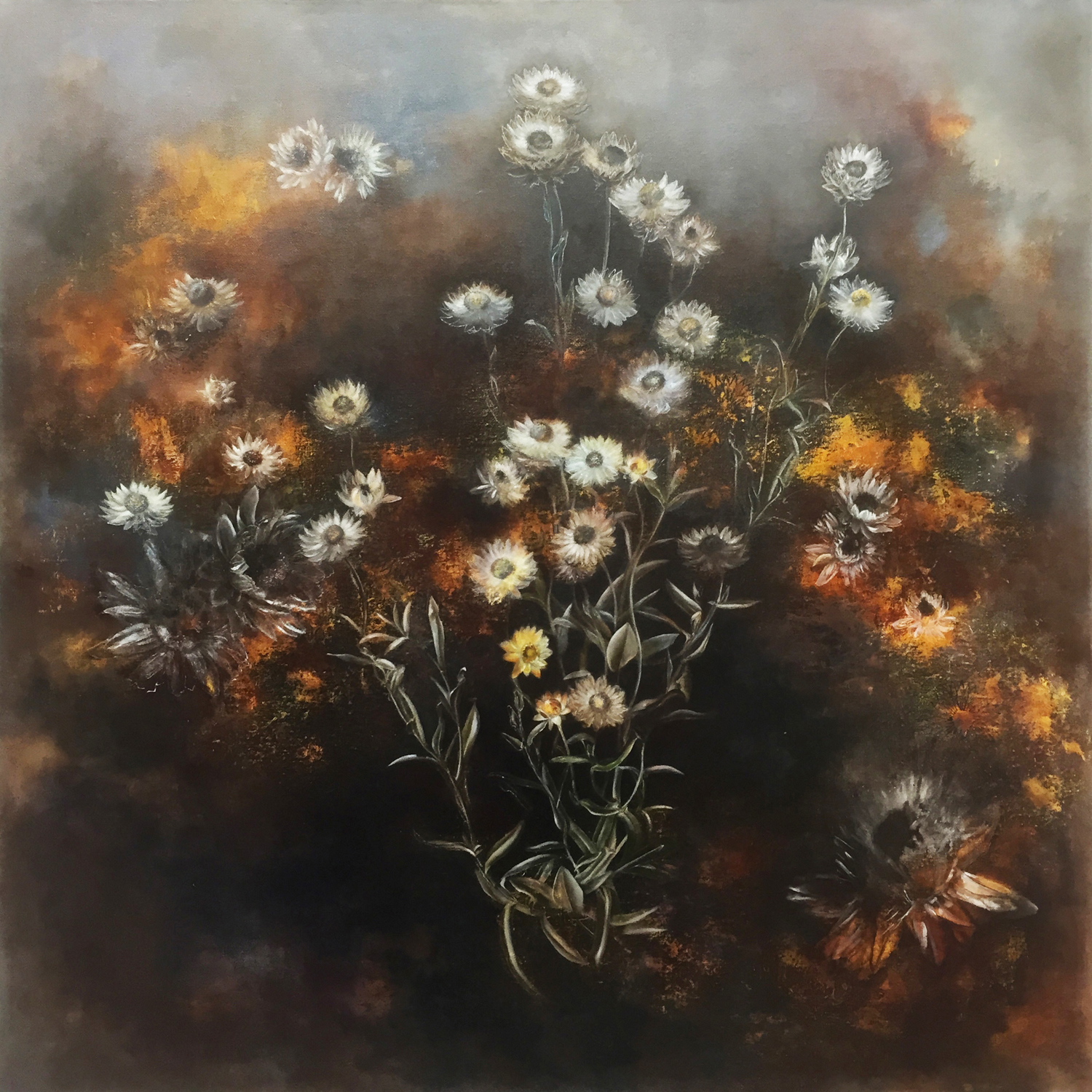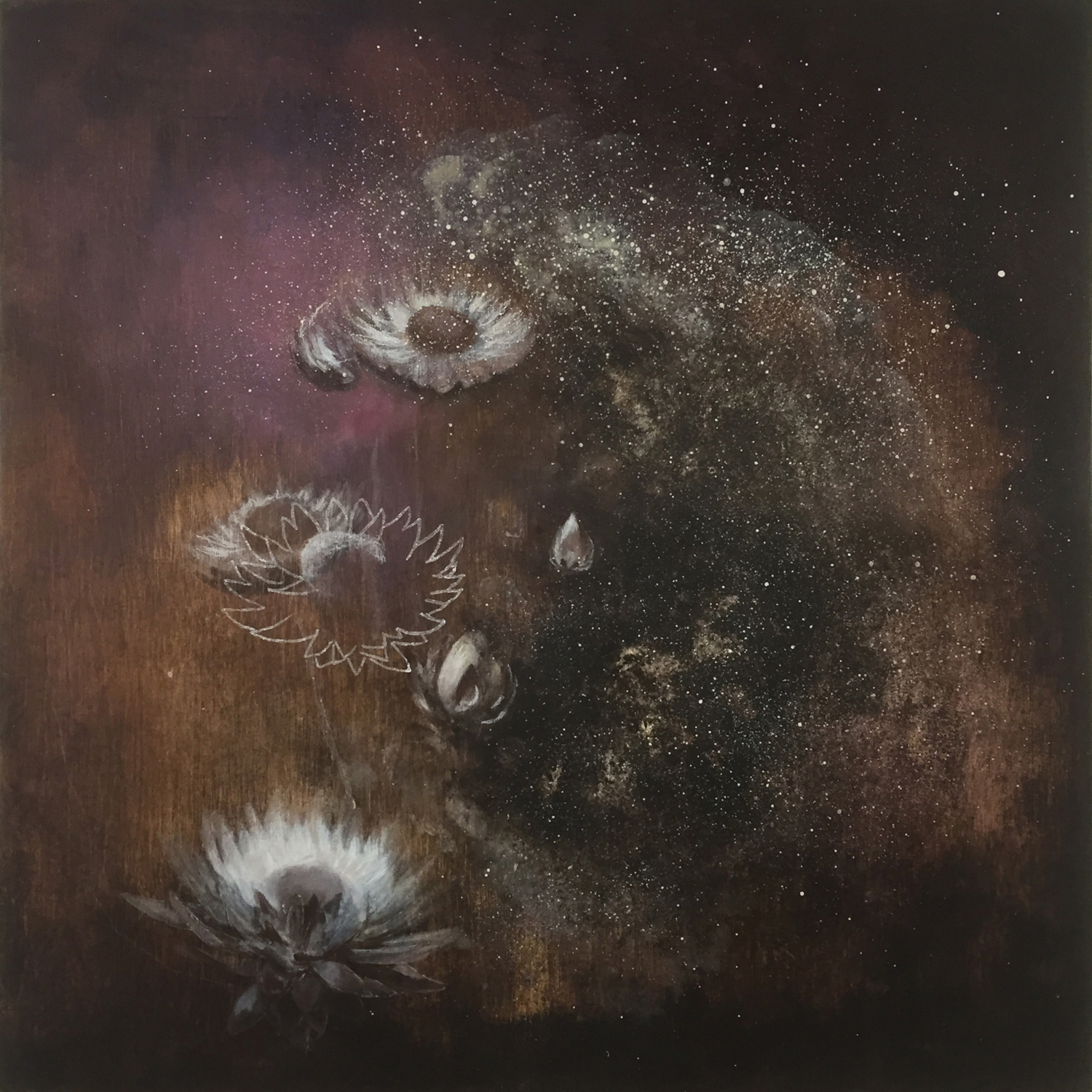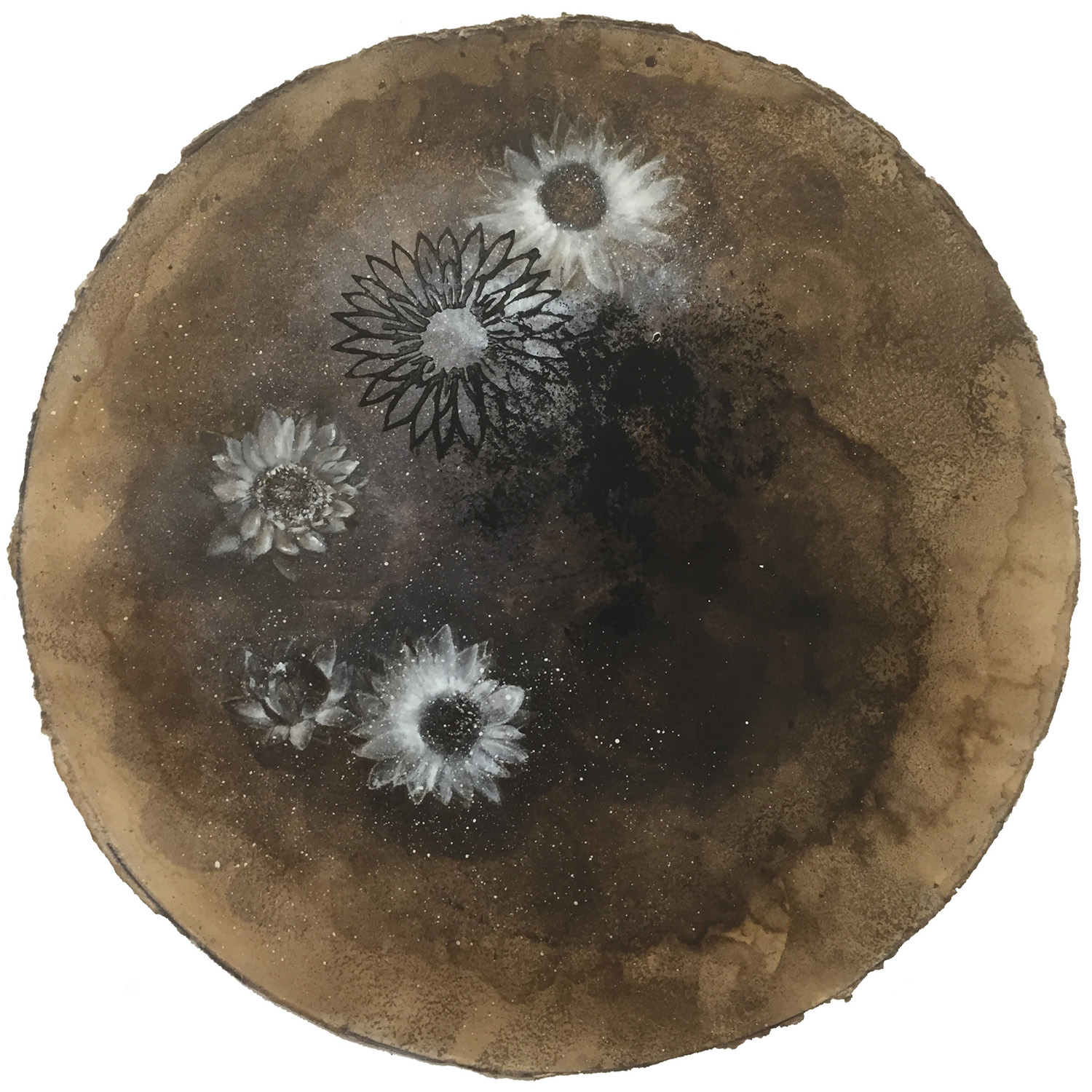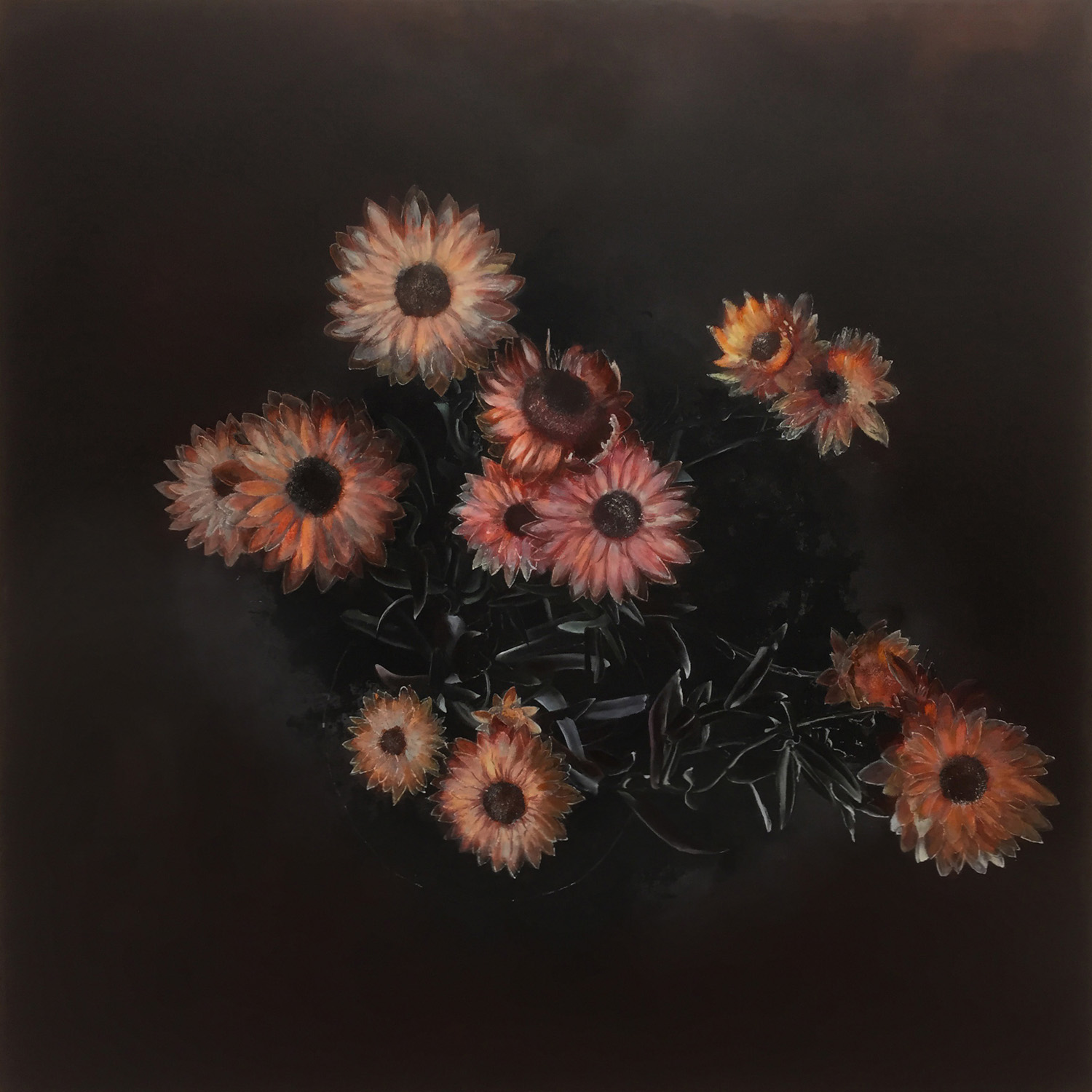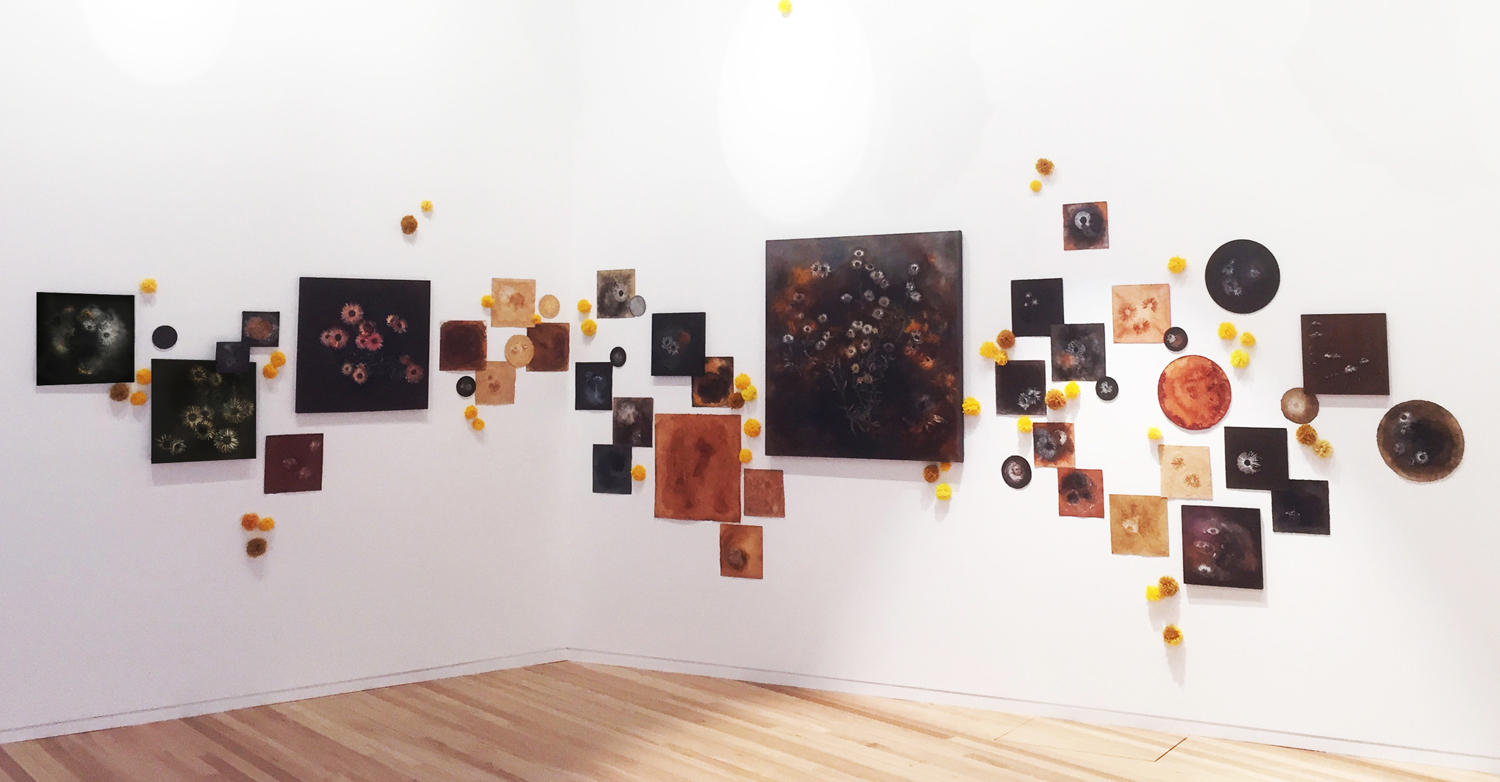Ephemeral Everlasting
an installation in
A Crafted History: People and Place 2015
Art Space Realm
6 November 2015- 13 January 2016
Ephemeral Everlasting, installation, 2015, oil paint, plant ink and cotton thread on wood and paper, wool pom poms, approx. 600 x 150 cm
Forever Ephemeral (with just a ghost of a chance)
Inspiration
There was a quest while making of these art works: an eleven-month hunt for a ghost. The wraith I sought was a 'ghost species', which is,
'.... a species that has been out evolved by its environment, such that, while it continues to exist, it has little prospect of avoiding extinction. Ghosts endure only in what conservation scientists call 'non-viable populations'.
Robert Macfarlane, 'Ghost Species', The New Nature Writing, Granta, 2008, p.123
Among the too many ghost species to choose from in the municipality of Maroondah, I chose the vulnerable Swamp Everlasting, for its paradoxical but aspirational name. I liked its spirit.
Swamp Everlastings (Xerochrysum palustre) look much like other Australian paper daisies – cheerfully yellow and decidedly unghost-like. If not for the ‘swamp’ bit they might yet be everlasting. Unfortunately, requiring a specific habitat is an existential limitation when that kind of habitat is in short supply.
My eleven-month hunt for remnant populations of Swamp Everlastings took me along various sections of Bungalook Creek in Heathmont, Croydon, Bayswater and South Kilsyth; due east of Melbourne. In the absence of my ghost, the installation Ephemeral Everlasting, became about the incidental things I found instead.
I began in the heat of summer in a swathe of land off Dorset Road that has been set aside for a freeway extension. This stretch of Bungalook Creek is piped underground but the low-lying land stays moist and somewhat swampy. Weeds and sturdy indigenous plants thrive and compete inside a fenced area, originally set aside to protect less viable specimens from the grass mowers. At ground level, and ever mindful of snakes, tantalising flashes of yellow Cat's ear, Buttercup and Gazania provide abundant, but non-everlasting, false hope.
Through Autumn, Winter and Spring my hunt continued along different parts of the creek and frequently with the Friends of Bungalook Creek Conservation Reserves during their monthly weeding bees. On each foray I also collected weeds and non-vulnerable native flora. Between visits I often worked with fellow artists, Anna Farago and Siri Hayes, to brew the collected leaves, bark and berries to make the dyes and paints used in this installation.
Qualification
Making the work became as much about making communities as it has been about making art, as was intended by curators Lisa Byrne and Jane O'Neill. Our brief was to work with Maroondah-based community groups to make new work addressing local issues. The Friends of Bungalook Conservation Reserves, the group I worked with most frequently from May to November 2015, was entirely made up of non artists. While they weren't involved with physically making this work, their stories, gleaned in the hours we spent each month pulling weeds and identifying rare plants, have informed the work in many ways.
The resulting exhibition featured five artists in A Crafted History: people and place which opened ArtSpace Realm, a brand new local government gallery in Ringwood.
The fashionable term these days is 'Social Practice' since 'community art' became a bit bound up in messy mural making after the 1970's. Though I'm loath to be fashionable this installation could be described as an output of a social practice for the way it has been enlightened by, not made by, communities.
The other core community was a casual craft group I meet with closer to home, and in particular with fellow artists Siri Hayes and Anna Farago, also exhibiting in A Crafted History. Siri, Anna and I made our work in parallel, sharing sensibilities, skills and ideas. I have deliberately borrowed techniques from these women: stitching from Anna and natural dyeing from Siri in order to realise an installation that merges a shared aesthetic style while relaxing a too strongly held attachment to originality and individualism. With these artists as well as with our larger craft group, I have developed the sense of an expanded art practice that can indeed be described as 'social' and also as critically supportive.
Finally this work has sought to make a slight - really quite tiny - adjustment to Virginia Woolf's precious insight that any artist, but especially a woman, must find a room of one's own in order to make an artistic contribution to the world. I strongly agree with this and feel the freedom and empowerment of her stance, particularly on Fridays when I take 12 or more solid hours out of my ordinary life and devote these to making art in a studio far from home. However I have recently felt, in my insistence on creative autonomy, that my daughter has missed catching some of the art making joy. Therefore for this project that relies so much on the stories, skills and conversations of others I've also actively involved some of our children to make pom poms and a cheerleading chant to encourage the swampies into better health.
Celebration
"Swamp pom pom, swamp pom pom", the girls chant in support of the elusive everlastings.
Swamp everlastings
Go go go
Do not lose them
No no no
Plant them, plant them
All around
And do not drain the swamps
Leave them, leave them
In the ground
And do not drain the swamps
Swamp everlastings
Go go go
We want them to
Grow grow grow
Acknowledgments
I would like to thank the Friends of Bungalook Conservation Reserves, in particular: Graeme Lorimer, Fiona Sutton, Rob Murray, John Kelly, Karen Davies, Sharon Potter, Andrew Lorimer, Bradley Jenner, Dan Lim, Michael Goddard and Annette O'Sullivan for providing invaluable local botanical knowledge, good company and tolerating surprise pom pom infestations during our monthly working bees. Other local environmental and cultural guidance was generously provided by Lisa Byrne, Jane O'Neill and Craig Mauger at Maroondah Council as well as by Peter & Alison Rogers and Alan & Hazel Veevers of the Ringwood Field Naturalists Club. Thanks to fellow artists, Anna Farago and Siri Hayes who have been stalwart artistic collaborators throughout this project and to Andy Drewitt, Michael Mark, Tim Mark and Adrian Miles for helping to facilitate the photographs and yet to be realised video piece in this project. And finally to junior collaborators, Cleo Farago, Miriam Mark-Aitken and Esme Keen, who developed the cheerleading chant that buoyed our spirits while hunting for elusive everlastings.


